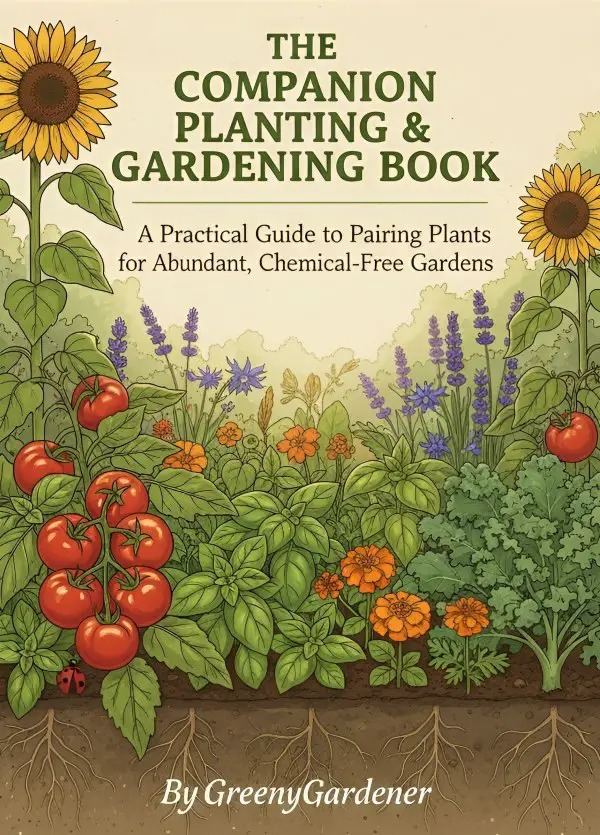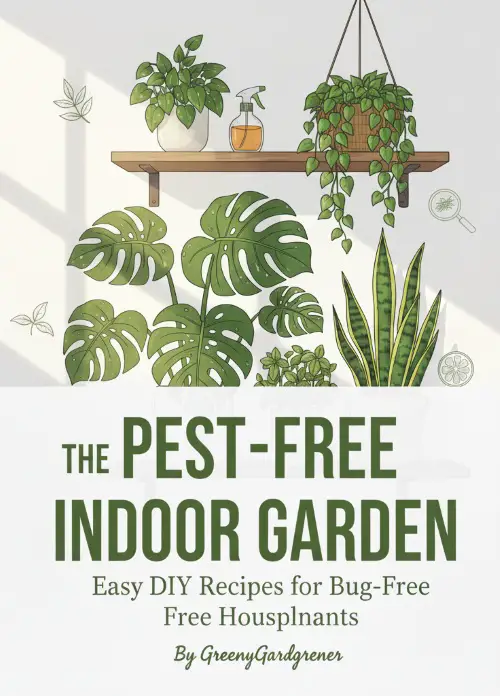What are Good Companion Plants for Hibiscus?
When growing hibiscus plants, whether indoors or outdoors, selecting ideal companion plants is essential to enhance their beauty, support their growth, and prevent pests naturally. This article explores some of the best companion plants for hibiscus, detailing how each one can benefit your garden’s health and aesthetics.
What's On the Page
- 1 Why Choose Companion Plants for Hibiscus?
- 2 Lavender (Lavandula)
- 3 Marigolds (Tagetes)
- 4 Salvia (Salvia officinalis)
- 5 Daylilies (Hemerocallis)
- 6 Hostas (Hosta spp.)
- 7 Catmint (Nepeta)
- 8 Coneflowers (Echinacea)
- 9 Nasturtiums (Tropaeolum)
- 10 Yarrow (Achillea millefolium)
- 11 Bee Balm (Monarda)
- 12 Planting Tips for Hibiscus Companion Plants
Why Choose Companion Plants for Hibiscus?
The concept of companion planting goes beyond aesthetics. Certain plants can attract beneficial insects, repel pests, improve soil quality, and even enhance the flowering of your hibiscus plants. Here, we will discuss some effective companion plants that work harmoniously with hibiscus.
Lavender (Lavandula)
Lavender is an excellent choice as a companion plant for hibiscus. With its pleasant aroma and pest-repelling properties, lavender helps deter aphids and other pests that can harm hibiscus. Additionally, lavender’s blue-purple flowers create a striking contrast against the bold, tropical appearance of hibiscus.
Benefits of Lavender as a Companion:
- Repels pests: Lavender’s aroma is known to deter pests, reducing the need for pesticides.
- Soil compatibility: Both lavender and hibiscus prefer well-drained soil, making them easy to manage together.
- Visual appeal: The purple hue of lavender complements the bright colors of hibiscus flowers.
Marigolds (Tagetes)
Marigolds are widely regarded as garden protectors due to their pest-repelling properties. These flowers release chemicals that naturally repel nematodes and other pests, keeping hibiscus plants healthy and vibrant.
Benefits of Marigolds as a Companion:
- Natural pest control: Marigolds are known to repel nematodes, aphids, and other pests that commonly attack hibiscus.
- Bright contrast: The yellow and orange flowers of marigolds enhance the visual appeal of hibiscus blooms.
- Soil improvement: Marigolds release substances that can help reduce harmful nematodes in the soil.
Salvia (Salvia officinalis)
Salvia, known for its vibrant purple and blue spikes, makes a wonderful companion plant to hibiscus. It adds height and color to your garden while attracting pollinators like bees and butterflies.

🌿 The Companion Planting & Gardening Book (eBook)
Bigger harvests, fewer pests — natural pairings & simple layouts. $2.40
Get – $2.40
🪴 The Pest-Free Indoor Garden (eBook)
DIY sprays & soil tips for bug-free houseplants. $1.99
Get – $1.99Benefits of Salvia as a Companion:
- Attracts pollinators: Salvia draws in pollinators, which benefits hibiscus by encouraging healthy blooming.
- Pest deterrent: The strong aroma of salvia can help to keep pests away.
- Soil compatibility: Salvia thrives in similar soil conditions as hibiscus, making them an ideal pairing.
Daylilies (Hemerocallis)
Daylilies, with their lush foliage and vibrant colors, provide a beautiful ground cover around hibiscus plants. They are hardy perennials that tolerate various conditions, making them easy to grow alongside hibiscus.
Benefits of Daylilies as a Companion:
- Ground cover: Daylilies help retain soil moisture and prevent weeds from overtaking the area around hibiscus.
- Low maintenance: Daylilies are resilient and do not require frequent care, making them a low-maintenance companion.
- Aesthetic appeal: Their bright colors complement hibiscus blooms, creating a vibrant and diverse garden.
Hostas (Hosta spp.)
Hostas are known for their large, lush leaves, which can serve as an excellent ground cover for hibiscus. They thrive in partial shade, making them suitable for gardens with mixed sunlight exposure.
Benefits of Hostas as a Companion:
- Moisture retention: Hostas retain moisture in the soil, helping hibiscus stay hydrated.
- Contrasting foliage: The broad leaves of hostas contrast beautifully with the delicate flowers of hibiscus.
- Weed suppression: Hostas act as a natural ground cover, minimizing weeds around hibiscus.
Catmint (Nepeta)
Catmint is another pest-repelling plant that pairs well with hibiscus. Known for its soft lavender-blue flowers and fragrant foliage, catmint attracts beneficial insects while deterring harmful ones.
Benefits of Catmint as a Companion:
- Repels pests: Catmint’s strong scent helps keep aphids and other pests away from hibiscus.
- Pollinator attraction: It attracts bees and butterflies, promoting healthy pollination.
- Heat tolerance: Catmint tolerates high temperatures, which complements the needs of hibiscus in warmer climates.
Coneflowers (Echinacea)
Coneflowers are hardy perennials with vibrant, daisy-like blooms that attract pollinators. Their bright colors add depth to the garden and provide support to hibiscus plants in terms of attracting bees and butterflies.
Benefits of Coneflowers as a Companion:
- Pollinator-friendly: Coneflowers attract pollinators, which helps hibiscus produce more blooms.
- Drought-resistant: They can tolerate dry conditions, making them a good match for hibiscus in well-drained soil.
- Pest resistance: Coneflowers are generally resistant to pests and diseases, offering natural protection to nearby hibiscus.
Nasturtiums (Tropaeolum)
Nasturtiums are edible flowers known for their ability to attract aphids away from other plants, serving as a sacrificial plant in the garden. Their bright flowers and rounded leaves bring a unique aesthetic to hibiscus pairings.
Benefits of Nasturtiums as a Companion:
- Aphid control: By attracting aphids away from hibiscus, nasturtiums serve as a pest management strategy.
- Edible flowers: Nasturtiums add an edible element to the garden, enhancing its utility.
- Color contrast: The bright blooms complement hibiscus flowers, adding diversity to the garden.
Yarrow (Achillea millefolium)
Yarrow is an herbaceous perennial with fern-like leaves and clustered blooms. Its ability to attract beneficial insects makes it a valuable companion for hibiscus plants.
Benefits of Yarrow as a Companion:
- Attracts beneficial insects: Yarrow attracts ladybugs and other insects that help control aphids and other pests on hibiscus.
- Drought-tolerant: Yarrow thrives in similar soil and watering conditions as hibiscus.
- Enhances pollination: The presence of yarrow can encourage bees and butterflies, benefiting hibiscus blooms.
Bee Balm (Monarda)
Bee balm, with its vibrant red and pink blooms, is a pollinator magnet, bringing bees, butterflies, and hummingbirds into the garden. Its aromatic leaves add an extra layer of protection to hibiscus by repelling pests.
Benefits of Bee Balm as a Companion:
- Pollinator attraction: Bee balm helps in attracting pollinators, which benefits hibiscus flowering.
- Natural pest deterrent: The fragrance of bee balm can keep pests away.
- Visual appeal: Its colorful flowers add vibrancy and depth to the garden.
Planting Tips for Hibiscus Companion Plants
To ensure optimal growth and appearance, follow these planting tips:
- Match Sunlight Needs: Hibiscus generally loves full sunlight, so pair it with plants like lavender, salvia, and coneflowers, which also thrive in sunny spots.
- Maintain Proper Spacing: Avoid overcrowding by ensuring sufficient space between hibiscus and its companion plants for healthy root and foliage growth.
- Soil Drainage: Most hibiscus plants prefer well-drained soil. Ensure companion plants share similar soil needs to avoid waterlogging issues.
- Monitor for Pests: While many companion plants naturally repel pests, regular garden checks can help catch any issues early on.
By choosing suitable companion plants for your hibiscus, you can create a more balanced, visually pleasing, and pest-resistant garden environment. Companion plants like lavender, marigolds, salvia, and daylilies not only enhance your hibiscus but also improve the health of the entire garden.
- Black Annual Flowers: A Complete Guide To Creating Moody, Dramatic - December 7, 2025
- Blue And Purple Flowers: Your Complete Guide To Planting A Serene - December 7, 2025
- Brown And Red Flowers – Unlocking A Bold And Sophisticated Garden - December 7, 2025
